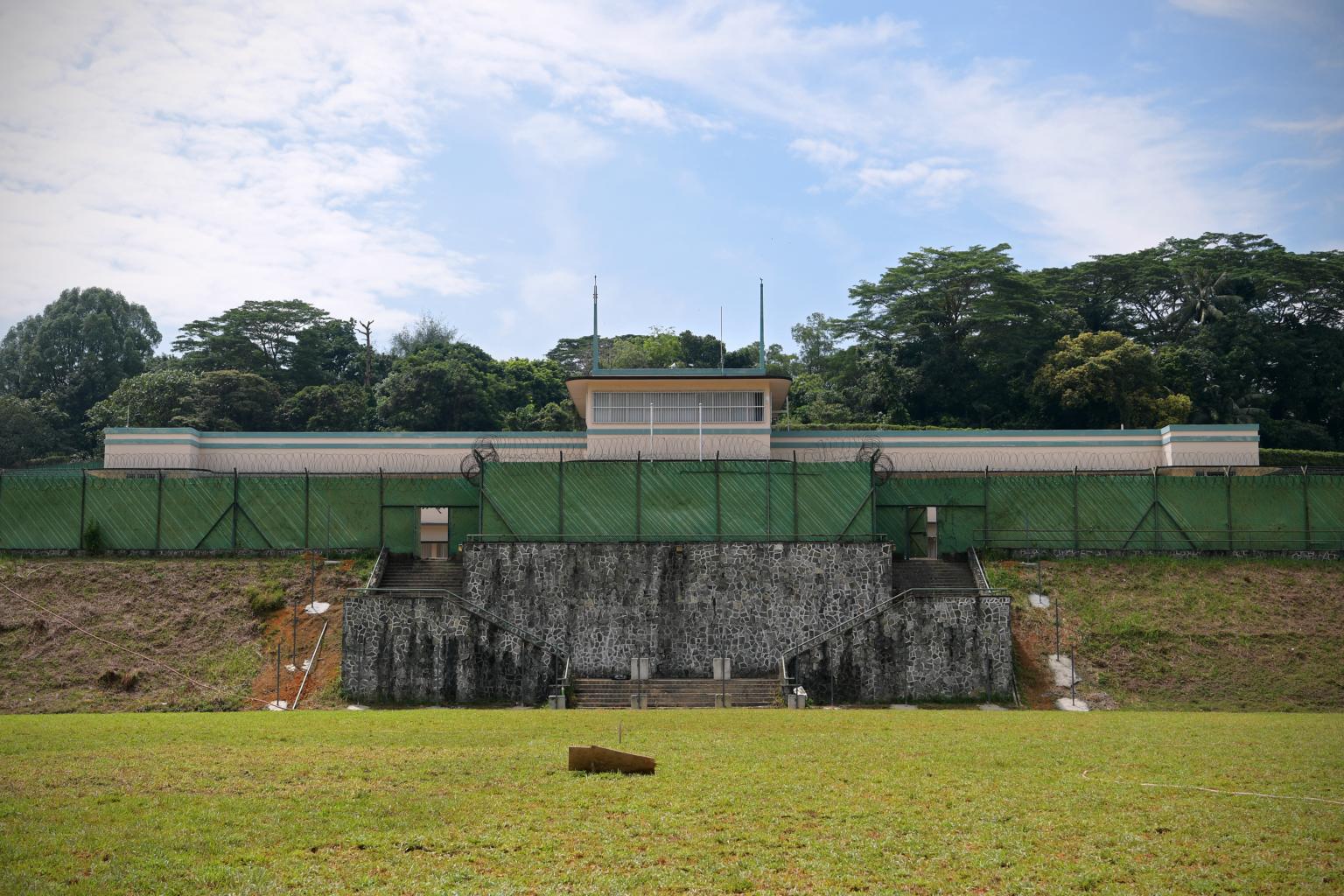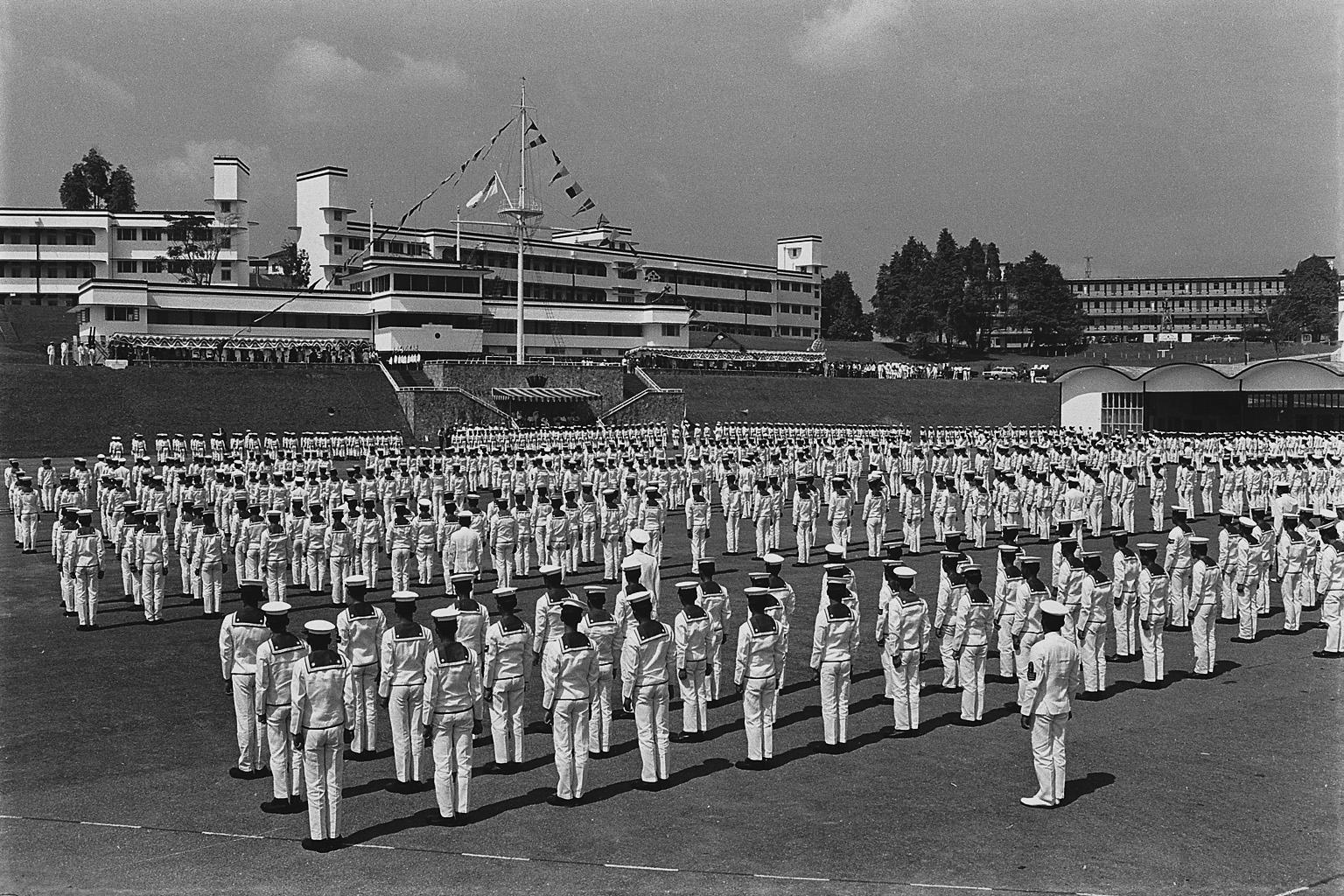Former Royal Malayan Naval Base admin block to be retained in future Woodlands North housing development
Sign up now: Get ST's newsletters delivered to your inbox

Agencies are studying ways to adaptively use the block in a manner that complements the future housing development.
ST PHOTO: NG SOR LUAN
Follow topic:
SINGAPORE - For close to two decades, a cluster of buildings in Woodlands North was known as Admiralty West Prison, until July 2018 when the prison's functions were relocated to Tanah Merah.
Prior to that, the buildings had served the Royal Malayan Navy for about five decades till 1997, functioning as its main base for about three decades during that period.
Today, a lone building within the former prison site still stands, its surrounding buildings demolished within the last year.
That building, the administrative block of the former naval base, will be kept as part of a future housing development at the site, said the Urban Redevelopment Authority (URA) in a statement to The Straits Times on Feb 14.
"Government agencies recognise the significance of the site for its role as a naval base in Singapore's military history," a URA spokesman said.
"Having consulted stakeholders, ranging from the Heritage and Identity Partnership panel to community stakeholders such as former residents of the naval base area, agencies will retain the admin block of the former naval base as a representation of its history."
The panel comprises members from diverse backgrounds, including those from the building industry, property owners and academics, and advises URA on ways to protect buildings and sustain built heritage as well as memories of places.
Built in 1953, the admin block is an Art Deco-inspired building with a central tower flanked by two symmetrical two-storey wings, said URA.
"The building is designed with an understated elegance, featuring tropical elements such as timber louvred vents and windows, while the open corridors at the second storey served as a viewing gallery to the parade square," it said.
URA added that a stone rubble wall and twin stairways leading to the former naval base's parade square that accentuate the admin block's grandeur will also be retained "to protect the unique setting of the building".
It said agencies are studying ways to adaptively use the block in a manner that complements the future housing development, which will be designed in a way that celebrates memories of the site.
One possibility would be to have an open space in front of the block to recall the former parade square's history, said URA.

The admin block of the former naval base is the only building that still stands, its surrounding buildings were demolished within the last year.
ST PHOTO: NG SOR LUAN
Architectural historian Yeo Kang Shua said retaining the stairways and the parade square as an ensemble with the admin block provides context for the building as a former military site, adding that he hoped the building's new function would also incorporate the use of the parade square.
URA said of the site's demolished blocks: "The rest of the buildings on the site are largely utilitarian, and will be redeveloped to meet future housing needs."
But heritage blogger and author Jerome Lim said he wished two accommodation blocks that were immediately behind the admin block and stairs had been kept, as well as the entire parade ground.
"Together, they made up a rather well-recognised landmark, a sight that many of the area's residents, past and present, will identify with," he said.
"The retention of the admin block and the flight of steps is, in my opinion, a token attempt at preserving the site," said Mr Lim, who added that it is likely that the retained structures will be dwarfed by imposing housing blocks after the site is redeveloped.
He hopes the block will be used in a way that is publicly accessible, and suggested that a storyboard or mini gallery could be used to recall the building's past.

Mr Lim said the site, which was first part of a British naval base before being used by the Royal Malayan Navy, is a reminder that Singapore was historically seen as part of a wider Malaya.
"It was also a symbol of the close ties and the interdependence that the two countries had, despite the differences, seeing how the Royal Malaysian Navy maintained their main naval base in the area up until 1979 - some 14 years following Singapore's separation from Malaysia," he said.
Mr Lim added that while other buildings belonging to the former naval base have been demolished, such as waterfront workshops and barracks and accommodation blocks, a jetty has been retained for recreational use, and is now part of Woodlands Waterfront Park.

